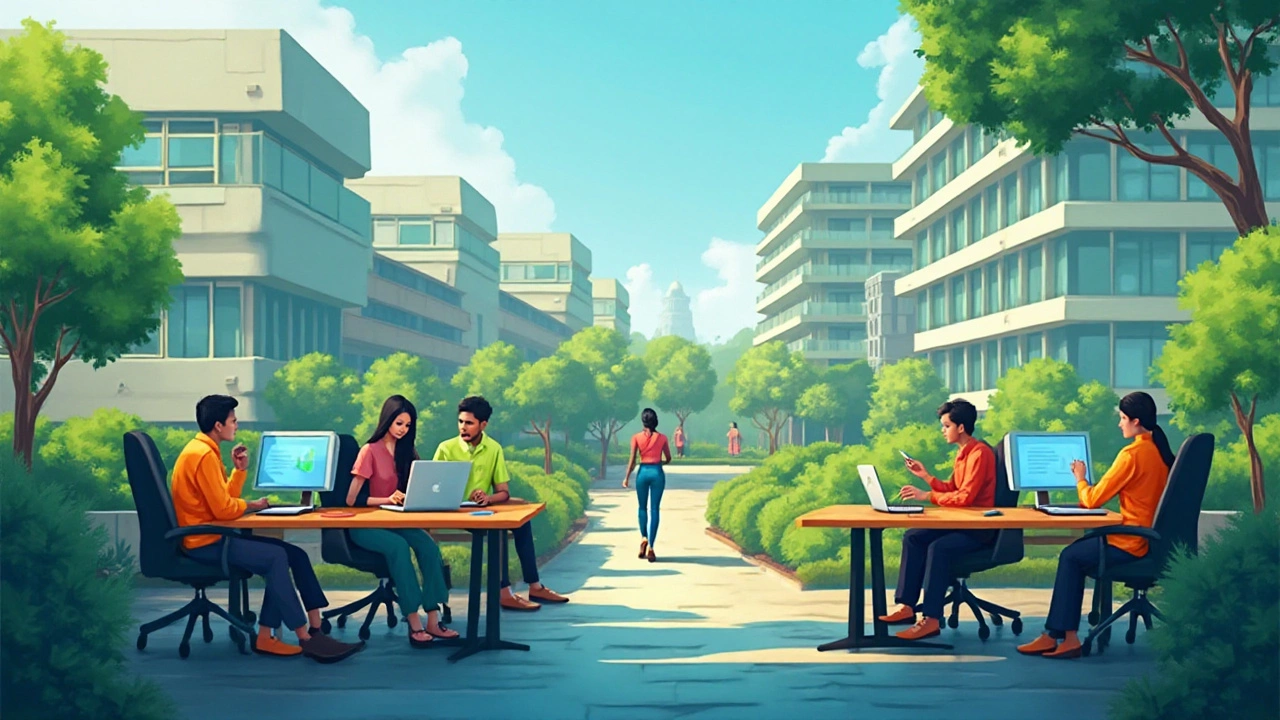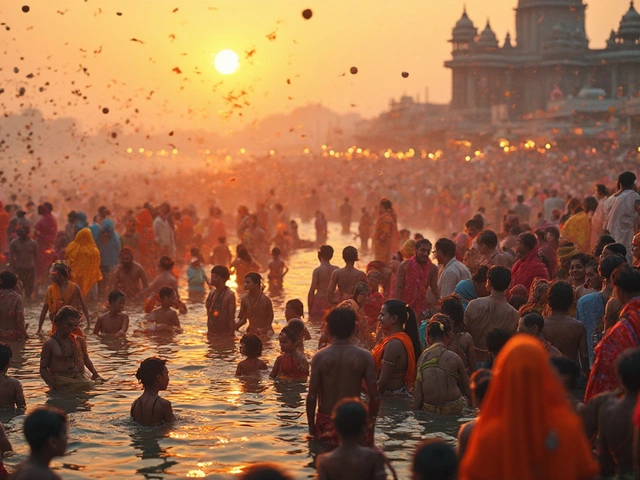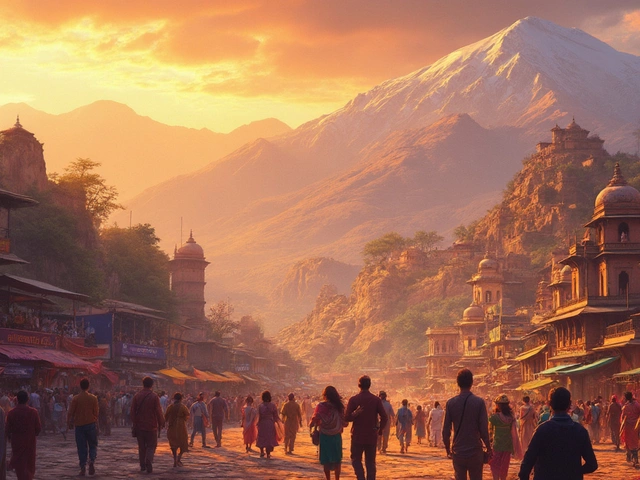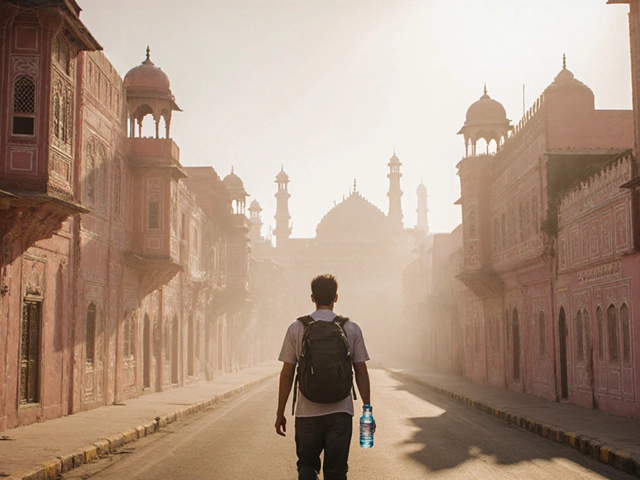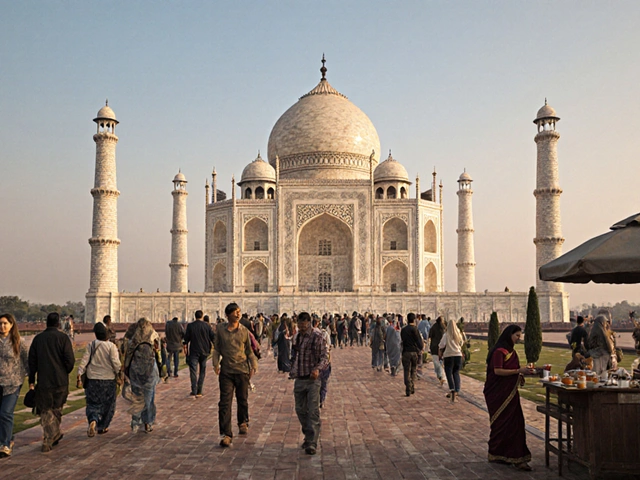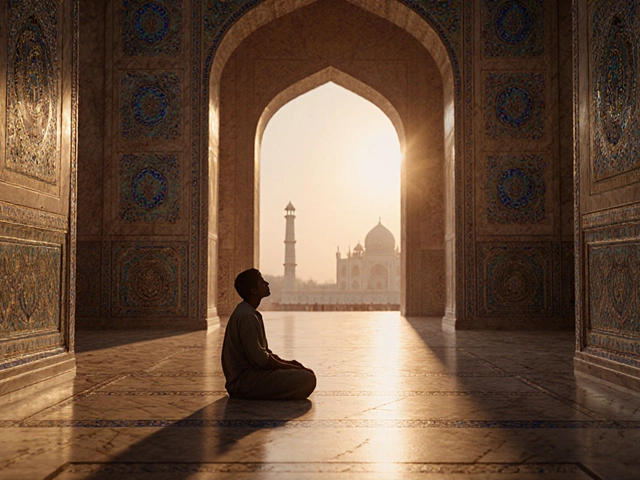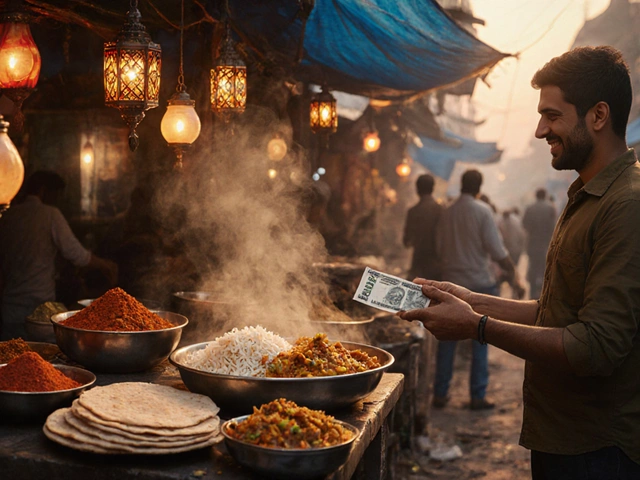India, a land known for its vibrant culture and extensive history, is often divided into two main regions: North and South. Each has its own unique way of life, traditions, and economic prowess. The economic question of whether South India is richer than its northern counterpart is often asked. It’s not an easy one to answer, given the distinct ways each region has developed.
South India is renowned for its tech boom, with large tech hubs like Bengaluru and Hyderabad generating significant economic activity. On the other hand, North India, with its majestic landscapes and iconic historical landmarks, draws millions of tourists every year. Yet, both regions offer much more than these characteristics. From vivid festivals to diverse cuisines, each presents an array of attractions that both tourists and economists find fascinating.
This article aims to explore these differences and similarities, offering a guided look into what makes both South and North India rich, be it culturally or economically. Travelers can learn valuable tips on what to explore and how to make the most of their visits to these captivating territories.
- Economic Overview of South and North India
- Tourism Highlights in North India
- Cultural Richness of South India
- Comparative Economic Growth
- Travel Tips for Exploring Both Regions
- Personal Stories from Travelers
Economic Overview of South and North India
When we dive into the economic landscapes of South India and North India, we find distinct influences and sectors that drive prosperity in each region. South India stands as a powerhouse of the information technology sector, with cities like Bengaluru, Chennai, and Hyderabad famously dubbed as the 'Silicon Valley of India'. This tech boom has not only attracted international corporations but also fostered a culture of innovation and entrepreneurship among local talent. The IT sector contributes massively to the GDP, accounting for significant foreign exchange earnings and employment opportunities. Apart from tech, South India also thrives through agriculture, automotive, and textile industries, ensuring a diverse economic foundation.
Conversely, North India's economy vibrates with historical significance and tourism. Home to India's capital, Delhi, and other major cities like Jaipur and Agra, North India attracts tourists drawn to its royal palaces, ancient forts, and vibrant marketplaces. Yet, agriculture remains the backbone for states such as Punjab and Haryana, often hailed as the 'Breadbasket of India'. Industrial growth is visible in sectors like textile, handicrafts, and automobile. The robust infrastructure network in North India facilitates trade, and its strategic location bordering several countries enhances its geopolitical advantages.
"The real wealth of a nation lies in the skills of its people. India is a prime example where diverse skills in different regions complement economic growth," says Narayan Murthy, a co-founder of Infosys Ltd.
The economic disparities between South and North India highlight contrasting paths of development. South India’s focus on education and IT excellence has given it a modern economic facelift, whereas North India continues to balance its rich historical culture with industrial and agricultural advancements. Both regions are imperative for the holistic economic narrative of India. Alongside these growth trajectories, various government initiatives and policies aim to tap into the potential of these regions, ensuring sustainable development and equitable distribution of resources across the country.
Strikingly, population density and infrastructure vary significantly between these regions. While South India enjoys coastal access that boosts trade, North India possesses a vital network of railroads and highways that crisscross the region, aiding commerce. This diversity in development paradigms effectively showcases how the regional economies draw from their geographical and cultural contexts to create prosperity. These disparities also contribute to varying lifestyles and opportunities available to the people living in these areas.
In recent years, efforts have been made to bridge economic differences between the two regions through initiatives like the Make in India campaign, which aims to promote manufacturing and attract foreign investments. Both regions are capitalizing on their strengths, with North Indian cities focusing on heritage tourism and South India leveraging its tech-driven economy. This dynamic interplay of old and new provides a captivating glimpse into the economic progress of each region and reflects the potential for future growth that both North and South India continue to hold.
Tourism Highlights in North India
When venturing into North India tourism, travelers are often greeted with a blend of history, spirituality, and culture that is second to none. North India is home to the mesmerizing Himalayas, which offer breathtaking views and thrilling trekking paths. From Ladakh's rugged landscapes to the lush green valleys of Himachal Pradesh, nature enthusiasts have plenty to explore. Yet, it's not just about natural beauty here. The North is rich in historic landmarks that tell tales of times gone by. The storied city of Agra boasts the iconic Taj Mahal, a wonder of the world that attracts millions of visitors annually, encapsulating a tale of eternal love within its marble walls.
Another critical aspect of North India tourism is its rich spiritual tapestry. The sacred city of Varanasi, situated on the banks of the River Ganges, draws pilgrims seeking solace in its ghats and temples. Meanwhile, the Golden Temple in Amritsar stands as a beacon of hospitality and beauty, offering a glimpse into Sikhism's compassionate tenets. Each of these places offers not just a destination, but an experience, tying visitors to centuries-old traditions that are still alive today. As reported by a renowned travel magazine, "North India, with its spiritual magnetism, is not just a destination but a journey into the soul."
Delving into the rich cultural heritage found in Rajasthan, one cannot overlook the fascinating forts and palaces that dot the landscape. Cities like Jaipur, fondly known as the Pink City, and Udaipur, with its romantic lakes, tell stories of valor and grandeur. Adventurous travelers can also explore the sand dunes through camel safaris in the Thar Desert, making for an unforgettable experience. And let's not forget Delhi, the heart of India, where ancient and modern worlds coexist, creating a vibrant backdrop full of life and activity.
The flavors of the North are as diverse as its sights. Chole Bhature, Biryani, and rich Mughlai cuisine tantalize taste buds, each dish offering a story of the region's culinary history. Exploring bustling local bazaars, like Chandni Chowk in Delhi, provides a sensory explosion of colors, aromas, and endless discoveries. It's here that you truly feel the pulse of North India, where tradition and modernity blend seamlessly, offering an unforgettable journey through culture and history.
It might be captivating for travelers to know that despite India's diverse economic landscape, the contribution of North India's tourism forms a substantial part of the country's overall tourism economy. The success of North India as a tourist haven significantly owes to its elaborate rail network and improving infrastructure aimed at providing travelers easy access to even the most remote destinations. With these enhancements, a trip across North India becomes a hassle-free adventure.
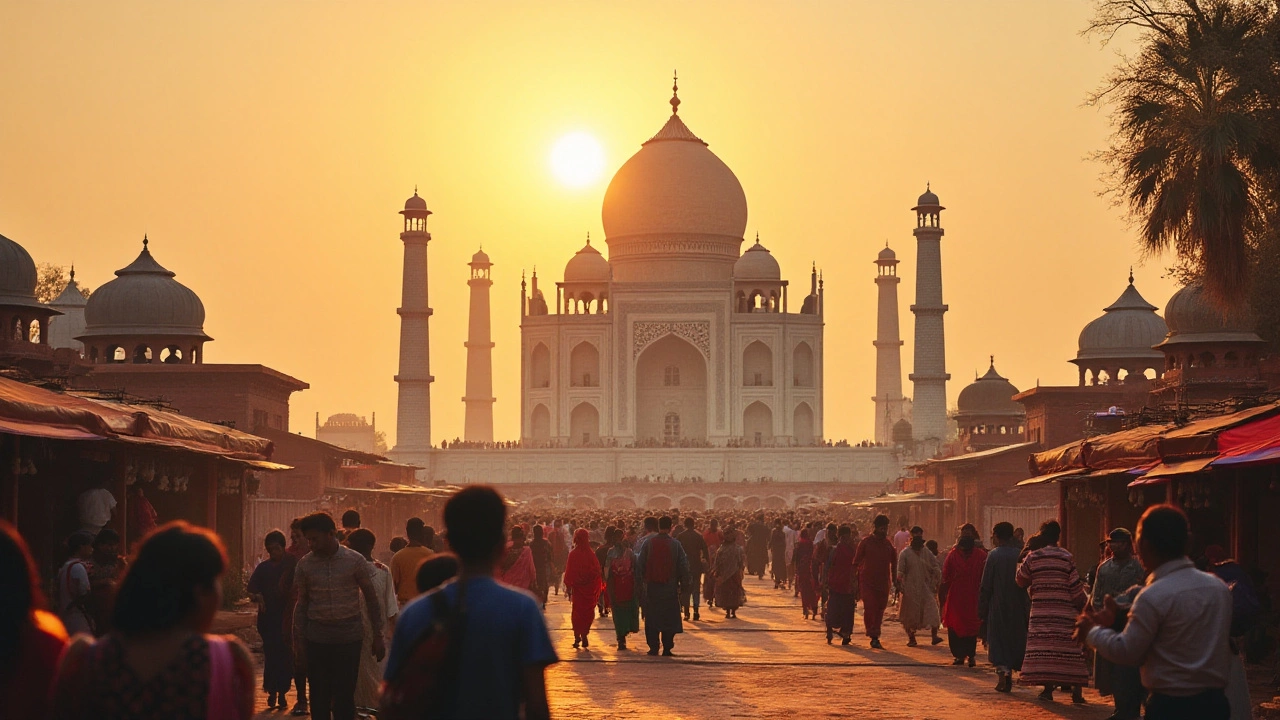
Cultural Richness of South India
The cultural landscape of South India is as varied as it is rich, offering a tapestry woven with ancient traditions, varied cuisines, and vibrant festivals. From the celebrated temples of Tamil Nadu to the serene backwaters of Kerala, each state in this region presents its unique charm and a wealth of cultural experiences. A significant hallmark of South Indian culture is its classical dance forms, such as Bharatanatyam, Kathakali, and Kuchipudi, each reflecting centuries-old traditions and storytelling techniques. Often, these dance forms are accompanied by the soulful strains of Carnatic music, providing an immersive experience into the region's artistic heritage.
The cuisine in South India is equally diverse, characterized by spicy, tangy flavors with rice as a staple. The use of coconut, tamarind, and a variety of spices like mustard seeds and curry leaves is prevalent. Each state boasts its culinary specialties, with Andhra Pradesh known for its fiery biryanis, while Karnataka is revered for its sweet Mysore Pak. Moreover, the temple architecture in this region is another marvel. The towering gopurams of temples such as Meenakshi in Madurai and the majestic carvings of Hampi offer insight into the architectural genius of ancient dynasties.
South India's festivals like Pongal, Onam, and Ugadi bring communities together, celebrating the region's agricultural bounty and historical customs. These festivals are marked with elaborate rituals, traditional music, and dance performances, providing a glimpse into the region's shared life. As Mahatma Gandhi once remarked, "The pathway to India's spiritual resurgence lies in the cultural evolution of South India," highlighting the importance of this region's cultural wealth. The vibrant cultural scene ensures there is always something new to explore, whether it be in a bustling city or a quiet village.
Comparative Economic Growth
When examining the economic growth of both South and North India, it becomes evident that each region has distinctive strengths contributing to their wealth. South India's economic landscape is largely driven by the burgeoning IT industry, particularly in cities like Bengaluru, Hyderabad, and Chennai. These cities have become major hubs for technology companies, not just in India, but globally. This growth has been fueled by several factors, including a strong educational infrastructure, abundant talent pool and a supportive governmental policy environment that encourages innovation and entrepreneurship.
In contrast, North India’s economic engine is powered by its vast agricultural base, rich mineral resources, and manufacturing sectors. States like Punjab and Haryana are regarded as the food baskets of India. Delhi, the capital city, serves as a vital commercial nucleus, attracting businesses from all over due to its strategic location and well-established infrastructure. The presence of historical and cultural sites in cities such as Agra and Jaipur further bolsters the region's economy through tourism. According to a report by McKinsey Global Institute, India has seen rapid growth, with Northern states contributing significantly to the country’s GDP.
Unlike the more service-oriented South, North India's economic resilience is often attributed to its diversified economy. This diversity helps the region weather economic downturns effectively. It is interesting to note that while South India might boast a higher per capita income due to its IT prowess, the agrarian and industrial backbone of the North plays a critical role in maintaining food security and industrial production for the nation. A 2023 report by World Bank highlighted that India’s agricultural sector accounted for approximately 17% of the GDP, with the majority of production arising from Northern states.
"The economic momentum of both North and South India reflects a healthy diversification of India's overall economic model, relying on both the nourishment provided by industry in the north and the leading technology services emerging from the south," noted the economist Arvind Subramanian in a recent panel discussion on India's economic future.
While some argue that the uneven distribution of growth can lead to regional disparities, there are also opportunities for collaboration. For instance, South India’s technological expertise could enhance agricultural efficiency in the North, while the North’s manufacturing strength could support infrastructure development projects in the South. As both regions continue to evolve, the blend of their strengths illustrates the dynamic nature of India's economic growth trajectory, showcasing rich potential for tourism, business opportunities, and cultural exchange.
Potential for Future Collaborations
There is growing interest in fostering collaborations between the regions to drive broader economic benefits. Initiatives encouraging smart agriculture, leveraging digital tools, and research partnerships are increasingly seen as pathways to bridge these regional economies. With concerted efforts, the combination of the North's industrial roots and the South's tech savvy could spearhead India's progress in the global economic arena, making it an even more attractive destination for tourists and investors alike.
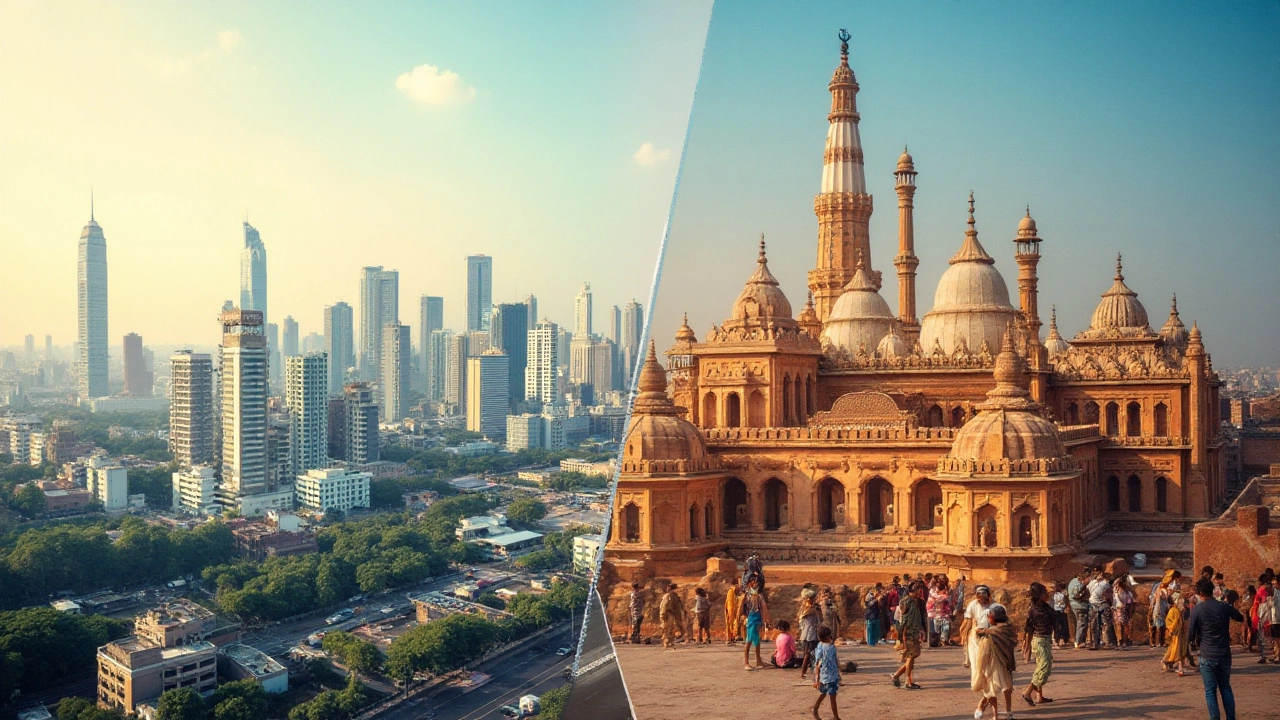
Travel Tips for Exploring Both Regions
Embarking on a journey through both North and South India is like undertaking two different adventures in one go. The kind of contrast and variety you will experience is essentially unparalleled. In the North India tourism sector, start your trip with the Golden Triangle—Delhi, Agra, and Jaipur. These cities are rich in history, architecture, and culture. In Delhi, visiting the Red Fort and Jama Masjid gives you a glimpse into India's past, while the bustling streets of Chandni Chowk offer an authentic taste of local life. Agra houses the Taj Mahal, a monument known worldwide for its beauty and romance, which should never be missed. Meanwhile, Jaipur's royal palaces will transport you back to the times of the Rajputs.
After absorbing the culture and history of the north, make your way to explore the vibrant and lush landscapes in South India. The backwaters of Kerala provide a peaceful escape from the hectic city life. Renting a houseboat for a night or two can offer a unique travel experience that isn't easily found elsewhere. If you're into technology or urban culture, Bengaluru or Hyderabad should be on your list, both centers of innovation and modern life. Don't miss out on seeing the ancient ruins at Hampi or the spiritual aura at the Madurai Meenakshi Temple.
"Traveling – it leaves you speechless, then turns you into a storyteller." – Ibn Battuta
Before you take off, make sure to check the weather conditions. South India tends to be more humid and hot, especially in summer, while North India can offer a cooler climate, particularly in winter. Dress accordingly to be comfortable throughout your adventure. Food is another aspect where north and south show their unique flavors—while the north sways towards naan and spicy curries, the south is known for its dosas and coconut-infused dishes. Always keep bottled water handy and make sure to try the street food, but from stalls that look well-maintained.
It’s crucial to travel light. India's diverse landscape means you’ll likely move around a lot, so a backpack is usually more manageable than a suitcase. If you're looking to save money, the Indian Railways system is extensive and offers a budget-friendly way to traverse the country, but be prepared for crowded trains and book your tickets ahead of time. Remember, safety comes first. Always let someone know your itinerary if you're traveling alone and avoid isolated areas after dark. A local SIM card is also advisable to stay connected, and apps like Ola or Uber provide reliable transportation options in the bigger cities.
No trip would be complete without capturing memories. Whether it be on a camera or your smartphone, don't forget to take plenty of photographs. India's colors, people, and scenery provide endless opportunities for fantastic shots. And while you're snapping away, remember not to get lost behind the lens. Savor moments in real time. Finally, interaction with locals can enrich your travel experience, so don't hesitate to strike up a conversation or join a local event if possible. Indian hospitality is not just a saying, it's a lived experience.
Personal Stories from Travelers
Travelers often share personal anecdotes about their adventures through both North India and South India, highlighting not just the destinations, but the experiences that make each journey memorable. Each story adds to the woven tapestry of India's rich and diverse cultural fabric. For many, the first encounter with the bustling streets of Delhi or the tranquil backwaters of Kerala leaves an indelible impression. These tales offer insights into the peculiarities and charms of each region, painting a picture that's both personal and universally relatable.
One traveler, Emily, shared her vivid experience of visiting the iconic Taj Mahal in Agra. The sunrise over the marble mausoleum evoked a sense of awe and timeless beauty, contrasting sharply with her later wanderings through the bustling bazaars of Jaipur where vibrant colors and fragrant spices enveloped her senses. In a candid moment, she confessed, "It felt like being at the center of a kaleidoscope." These words capture not only the physical beauty but the emotional resonance that North India imparts to its visitors.
On the other side, South India offers a different flavor of enchantment. Take the story of Alex, who embarked on a spiritual journey through Tamil Nadu's historic temples. The intricate carvings and ancient chants in places like the Meenakshi Temple filled him with a profound sense of tranquility and reflection. His journey wasn't just about sightseeing but about understanding a way of life where religion and art intersect beautifully. "The temples of South India," he noted, "are not just places of worship but custodians of time." This reflection encompasses the depth of cultural richness that South India nurtures.
For those curious about the numbers, South India's economic infrastructure often impresses with advancements in technology and education. Known as the Silicon Valley of India, Bengaluru accounts for substantial contributions to India's GDP. This economic health, in turn, supports the thriving tourism sector, allowing travelers to comfortably explore while indulging in the region's notorious hospitality. On their journey from the serene beaches of Goa to the bustling streets of Chennai, many travelers find themselves entwined in a narrative that’s as much about personal growth as it is about geographic exploration.
In another anecdote, a visitor named Raj recounted a road trip from Delhi to the snow-covered mountains of Himachal Pradesh. Starting from the historical aura of the capital, he was captivated by the changing landscapes that seemed to narrate history on nature’s canvas. Each stop along the way revealed stories of India's grandeur—from age-old palaces to remote villages where time seemed to stand still. Diverse yet connected, these stories emphasize the intricate tapestry of human experience defined by place and perspective.
"Travel brings power and love back into your life," said the renowned travel author Rumi. These stories gleaned from journeys across North and South India exemplify this sentiment, speaking to the heart of travelers who find not just destinations, but reminders of their own humanity in every corner of the incredible subcontinent.
